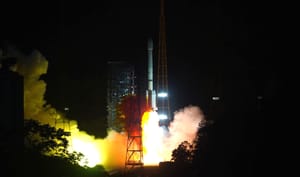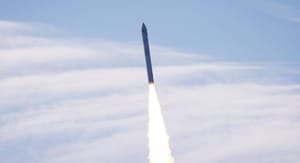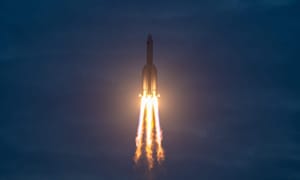
Pakistan's newest communications satellite headed to a geosynchronous transfer orbit atop of a Long March 3B/E from the Xinchang Satellite Launch Center's Launch Complex 2, located in southern China. Liftoff occurred at 20:12 pm, China Standard Time, on May 30th, or 12:12 pm Universal Coordinated Time.
The spacecraft atop of the Long March 3B/E was Paksat-MM1R, which is built on the China Academy of Space Technology's Dongfanghong-4 enhanced platform. Paksat-MM1R is claimed as being able to provide television, radio, and regional communications in Pakistan, with the satellite residing at 38.2 degrees east geosynchronous orbit.

Paksat-MM1R is equipped with nine antennas and forty-eight multi-band transponders that will communicate in the C, Ku, Ka, and L bands to enable services in Pakistan and neighboring regions. The spacecraft is expected to operate for fifteen years on orbit after a set commissioning period, where the satellite will undergo final tests of its systems.
The launch of this spacecraft from Xichang is also believed to be playing a positive role in deepening friendship and cooperation between China and Pakistan via the Belt and Road Initiative. It is also the second time Pakistan and China have collaborated on a communications satellite for use by Pakistan, with the last time being in 2011.
This was also the five-hundred and twenty-fourth launch of a Long March rocket, the ninety-sixth launch of the Long March 3B series, and the twenty-sixth orbital launch from China in 2024.

What is the Long March 3B/E?
The Long March 3B/E is a three-stage rocket manufactured by the China Academy of Launch Vehicle Technology that burns Dinitrogen Tetroxide and Unsymmetrical Dimethylhydrazine in its first and second stages as well as its boosters. The third-stage burns liquid hydrogen and liquid oxygen.

The Long March 3B/E is claimed as being able to lift up to 11,500 kilograms to a low Earth orbit, 7,100 kilograms to a sun-synchronous orbit, 5,500 kilograms to a geosynchronous transfer orbit, 2,000 kilograms to a geostationary orbit, or 3,300 kilograms to a heliocentric orbit.
On the launch pad, the launch vehicle weighs 458,970 kilograms fully fuelled, and stands 56.3 meters tall.
The first-stage is powered by four YF-21C engines generating 302 tons of thrust burning Dinitrogen Tetroxide and Unsymmetrical Dimethylhydrazine for two minutes and thirty-eight seconds. Around the first-stage are four boosters, each powered by one YF-25 engine generating 75 tons of thrust burning Dinitrogen Tetroxide and Unsymmetrical Dimethylhydrazine for two minutes and twenty seconds. These four boosters have a combined thrust of 302 tons of thrust. The boosters and first-stage have a combined thrust of 604 tons.
One YF-24E engine powers the launch vehicle's second-stage, which burns unsymmetrical dimethylhydrazine and dinitrogen tetroxide for three minutes and five seconds while generating 80 tons of thrust.

The third-stage is powered by two YF-75 engines that generate 17 tons of thrust while burning liquid hydrogen and liquid oxygen for seven minutes and fifty-eight seconds.



